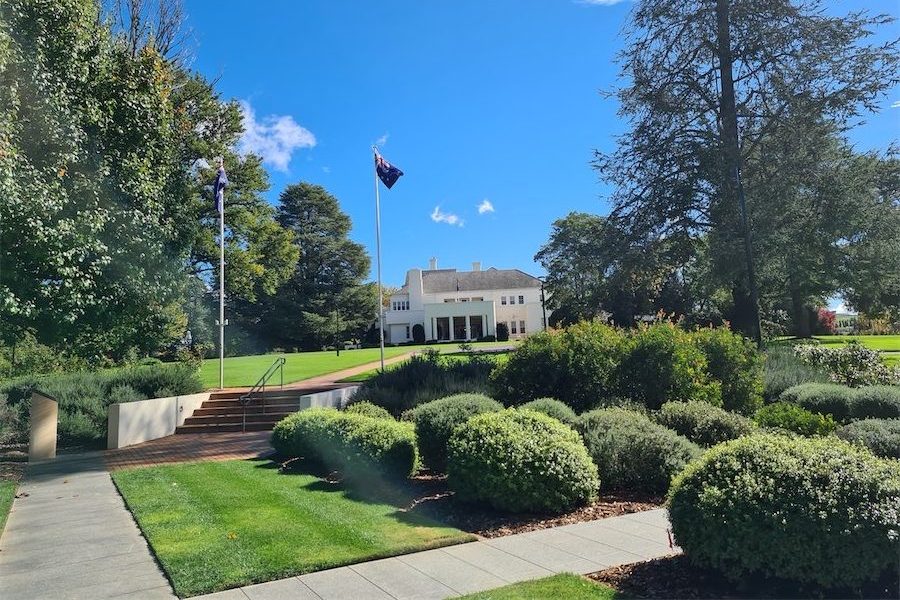
“Yesterdays” columnist NICHOLE OVERALL looks at the long journey of women to represent the seat of Eden-Monaro. Now, after 119 years, their moment has finally arrived
EDEN-Monaro has long been something of a “media tart”, but its looming resignation-induced by-election is history unfurling before our eyes – let alone political aspirations.

It’s less about a potential return to former “bellwether” status (the tendency to “predict” the government of the day), which will also mean it’ll be the first time in a century a federal government takes the trophy from the opposition in such a between-elections election.
Nor is it because it’s only the second time E-M’s had a by-election since creation in 1901 (the 159th for Australia overall).
While the cameras have been focused on the blokes and the shenanigans around who’s vying to be on the ballot paper, the most significant element in this particular electoral contest is on the other side of the gender divide. Beyond a genuine bolt from the blue that sees an outside chance bringing it home, one way or another, for the first time Eden-Monaro looks likely to have a female member of parliament.
After 119 years, Labor has for the first time decided on a woman to hold aloft its banner – an apparently unopposed Kristy McBain, former mayor of Bega.
Only a year ago, Fiona Kotvojs was the first woman to run as a Liberal in the seat’s history, getting within 1600-odd votes of the now-retired – from politics at any rate – Mike Kelly. Now, after all the various kerfuffles, Kotvojs has this weekend been pre-selected again for the Libs.
Australia first gave women the vote and legislated they be able to run in elections federally from 1902 (SA was the first colony/state to do so in 1894, having allowed them to vote at a local level as early as 1861). State elections varied dramatically, the right to vote and stand ranging between 1902 and 1923. Accordingly, it was 1921 before Edith Cowan became the country’s first female parliamentarian on election to the Legislative Assembly of WA.

Dames Enid Lyons and Dorothy Tangney were the first women elected to Federal Parliament in 1943. It would be another 34 years after that before E-M had its first female electoral option.
In 1977, Norma Helmers gained 8.6 per cent of the vote when she ran for the newly formed Democrats (the “centrist” party founded by Don “keep the bastards honest” Chipp and Australia’s largest minor party until 2004). She’d have another go in 1980, her numbers reduced to 5.1 per cent.
In 1983, independent Miriam Naughton sallied forth, but could only manage 3.1 per cent (she did outpoll the male Democrats candidate of that year, whose vote fell to 2.7 per cent).

It would take another 13 years for history to be made again locally. In a line-up of eight political aspirationals, half of them were female*: independent Robyn Loydell (5.99 per cent), Nora Endean, Democrats (3.59 per cent), Robin Tennant-Woods for the Greens (3.53 per cent), and Irene Brown as part of the Australians Against Further Immigration (1.9 per cent).
At that election, staying true to its “bellwether” nature (from 1972 at any rate), Labor’s Jim Snow lost the seat after five successful elections, to Lib Gary Nairn. The two-party preferred result was 54.76 per cent to 45.24 per cent, the largest swing in 50 years – and since – at more than 9 per cent, and John Howard became Prime Minister.
The 2019 election had been the first occasion a female Liberal candidate had run against a female candidate for the National Party in Sophie Wade (it also marked the first three-cornered affair of the major parties since 1993).
It was though, the second time a woman had run for the Nats in E-M. Gaye White in 1990 secured a respectable 9.5 per cent, one of two women (the other, Denise Redmond, Democrats) in a field of six.
In an interesting aside, while Wade at the last election only managed 6.95 per cent of the vote – coming in after the Greens at 8.78 per cent (second highest after its 2010 peak of 9.72 per cent) – given what’s recently played out in the media with Libs v Nats in Eden-Monaro, the idea that it’s solely a Labor or Liberal seat has previously been challenged.
When then Country Party candidate Ron Brewer secured 30.1 per cent of the vote in 1974 – Liberal Jonathon Bell achieving 19.9 per cent – Brewer almost snatched it from Labor’s Bob Whan in the two-party preferred finish of 49.9 per cent to 50.1 per cent, one of the narrowest of its margins.
It’s also relevant given the current goings-on as Brewer was attempting to make the move from state politics to federal. Elected as the member for Goulburn in 1965, he resigned and took the plunge.
Again from a position of historical interest, without being so vulgar as to speculate on anyone’s age, it could also wind up being the youngest member E-M’s ever voted in; to date, that goes to Lib Murray Sainsbury who was 35 when he won in 1975 (for trivia, oldest was Allan Fraser at 67 in his 1969 second run).
More at anoverallview.wixsite.com/blog
Who can be trusted?
In a world of spin and confusion, there’s never been a more important time to support independent journalism in Canberra.
If you trust our work online and want to enforce the power of independent voices, I invite you to make a small contribution.
Every dollar of support is invested back into our journalism to help keep citynews.com.au strong and free.
Thank you,
Ian Meikle, editor




Leave a Reply